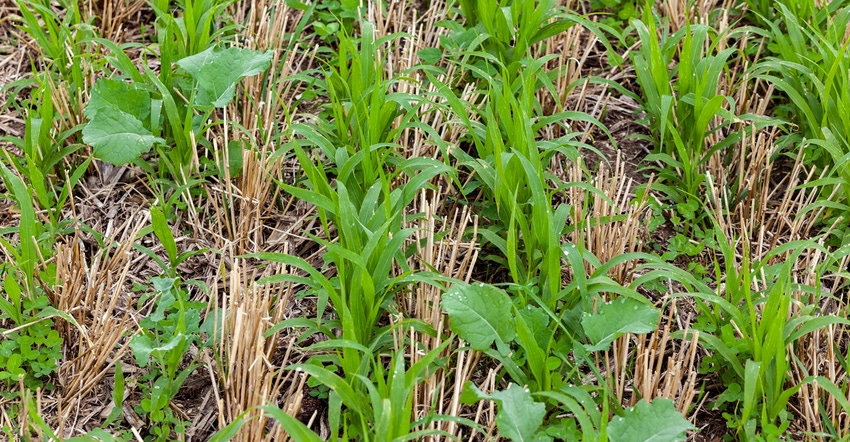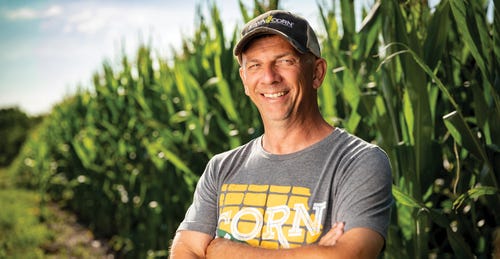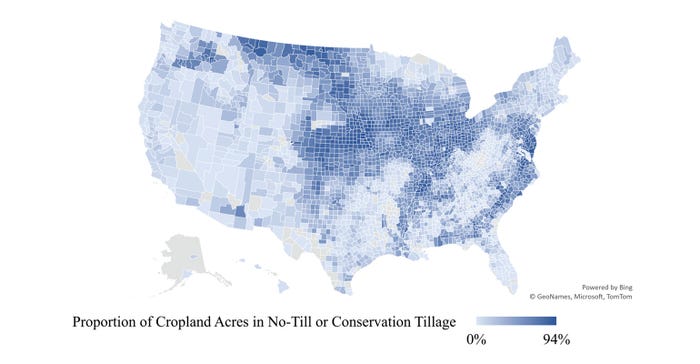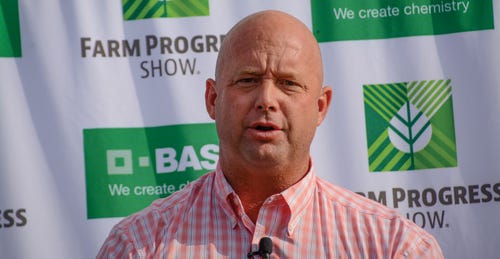
Iowa farmers Lance Lillibridge and Kelly Garrett have this advice for farmers thinking about signing a carbon contract:
Walk, don’t run.
Talk to an attorney.
Ask yourself this question: Is what’s being offered enough?
Know the value of the credits and how you get paid. Some carbon exchanges want to amortize payments over 10 years.
Know how many years you are held to the contract.
Know how to stay in compliance.

Good advice, but it may just scratch the surface. A handful of farmers have carbon contracts, and many more will soon join those ranks. But the process is confusing, with no clear understanding of what to do, who to work with, or how it all gets measured and quantified. And who writes the check?
“For most growers right now, this is all too confusing,” says Aldyen Donnelly, co-founder and director of carbon economics with Nori, a carbon removal marketplace.
Donnelly was an early pioneer in carbon markets. In the mid-1990s, she brought together an “emission reduction credit” buyers group and executed the world’s first purchase agreement to finance carbon sequestration in farm soils.
“Right now, it feels like there are too many options,” she says. “People are asking, ‘What do we do next?’ ”
To help, here are some answers to frequent questions:
Who is involved and how long does it take to start a carbon project? It takes 60 to 120 days to register a project with Nori; Donnelly hopes to get that number down to 30 days.
“The biggest issue is to secure authority from other parties who have ownership in the fields,” she says. “Our advice is to make sure first that everyone who has ownership interest has given an OK to the registration of this project, to get enrolled. We’re finding that is a big challenge. Farm advisers may be able to make this easier.”
Do I own my project and credits? There are two different models for accessing those markets. In the case of Nori, the No. 1 goal is to make sure that aggregators and data managers are welcome, and it’s directly accessible to individual farmers.
Am I giving away my private farm operating data? What can the aggregator, registry operator or market administrator do with it? It’s a good question to ask your carbon removal facilitator. Nori is only allowed to use that data to produce estimates of carbon stock change. It will not use the data for any other purpose, or make data available to anyone else.
Is stored carbon permanently stored? Soil carbon is reversible. If performing no-till, but doing some situational tillage to eliminate field ruts, that re-releases carbon.

How would carbon contracts handle these situations? “It’s a little vague,” says Purdue ag economist Nathan Thompson. “My understanding is a lot of the companies will tell you you won’t have to pay back payments, but may pause payments until you can re-sequester the carbon. While it sounds great in theory, if a farmer has to go in and do this and they pause payments, that farmer may have little incentive to continue the practice. We see legal liability show up in our survey, and it’s a legitimate concern.”
Who sets the prices for credits? In some circumstances, it’s going to be that third-party aggregator or market administrator, and they are all different.
“In our program, we’re simply paying the farmer to implement a practice, a flat rate for that practice, and paid after validation, so it’s not subject to sale of carbon,” says Lisa Streck, carbon business model grower program lead with Bayer Crop Science. “We’ve tried to structure the program for simplicity at this time, and we’ll continue to reevaluate the program over time.”

If a buyer pays $20 per ton for my carbon credits, how much do I receive, and when do I get paid? The first question should be easy for your market administrator to answer. In your contract, know if the carbon exchange has to tell you at what price it is selling your credits, and what your take will be.
The harder question is how fast it will sell. This is a new market for not only sellers but also buyers, so some days there is excess demand and some days less so.
Do I have to keep reporting farm operating data after the aggregator or credit buyer stops paying for credits? Yes, for a period. Buyers in this market want a credit that is not just evidence that carbon was drawn out of the atmosphere, but also an affirmation that the owner is maintaining this over a period of time. Determine in your contract how long you have to keep reporting this data.
“At Nori, we are committed to doing this for at least 10 years,” Donnelly says. “Other markets, you make commitments to retain that carbon stock for 100 years. What we all agree on is we’re trying to rebuild soil organic stocks back up to the level they were 300 years ago. That’s more than enough to cover electricity emissions in the U.S. for the next 30 to 50 years.”
Am I contractually bound to specific soil treatments, or cropping or livestock management practices? The answers are different for each of the different marketplaces. You need to know what you are committing to before you sign anything. Find out if the contract translates to a lien attachment on your property, or if it possibly increases or impairs the value of your property.
How does carbon sequestration get measured? In some carbon markets, soil sampling and testing must be done at least every five years, and carbon credits are only issued after that happens. Nori handles qualifications based on USDA Natural Resources Conservation Service models, accessing a company called Soil Metrics that has a licensed, taxpayer tool called CometFarm.
“We do suggest farmers do soil testing, and if they show underestimates, we are obligated to respond to those and issue additional credits,” Donnelly says. “But even when you do the most accurate soil sampling possible, the best results you get will still fluctuate wildly.
“We’ve seen a few well-intended parties sell carbon credits based on short-term carbon stock estimates. The problem in this situation is the next few soil testing events will show you didn’t actually sequester that much carbon, and you could be backing yourself into a liability situation. With Nori, we issue as many credits as early as possible, but minimize the risk that you will make that mistake. Just step back and ask everyone from NRCS to the market aggregators, ‘What am I looking at here?’ ”
How long will this take? More often than not, the transition from intensive to regenerative practices takes at least seven years and often more like 12 to 20 years. Somewhere in years three to six, most growers are going to feel the conversion cost is harder than the payback. But by the time you get to year 12, you have more resilient soils, more profitability and higher yields. And if nothing else, the carbon credit might help you get through that difficult financial period in years three to six.
How do I start? Think of carbon as a crop. You’re still managing land and soil for the best possible outcomes over time, and carbon has to fit into that way of looking at things.
Do an overview of your farm’s current practices, and consider what it would cost to make changes in those practices. Then, ask lots of questions: What are the contract terms? Length and payment? And remember this: You don’t have to enroll every acre. It may be best to start treating this like a test plot and pay some “learning tuition” for a year or two.
About the Author(s)
You May Also Like






